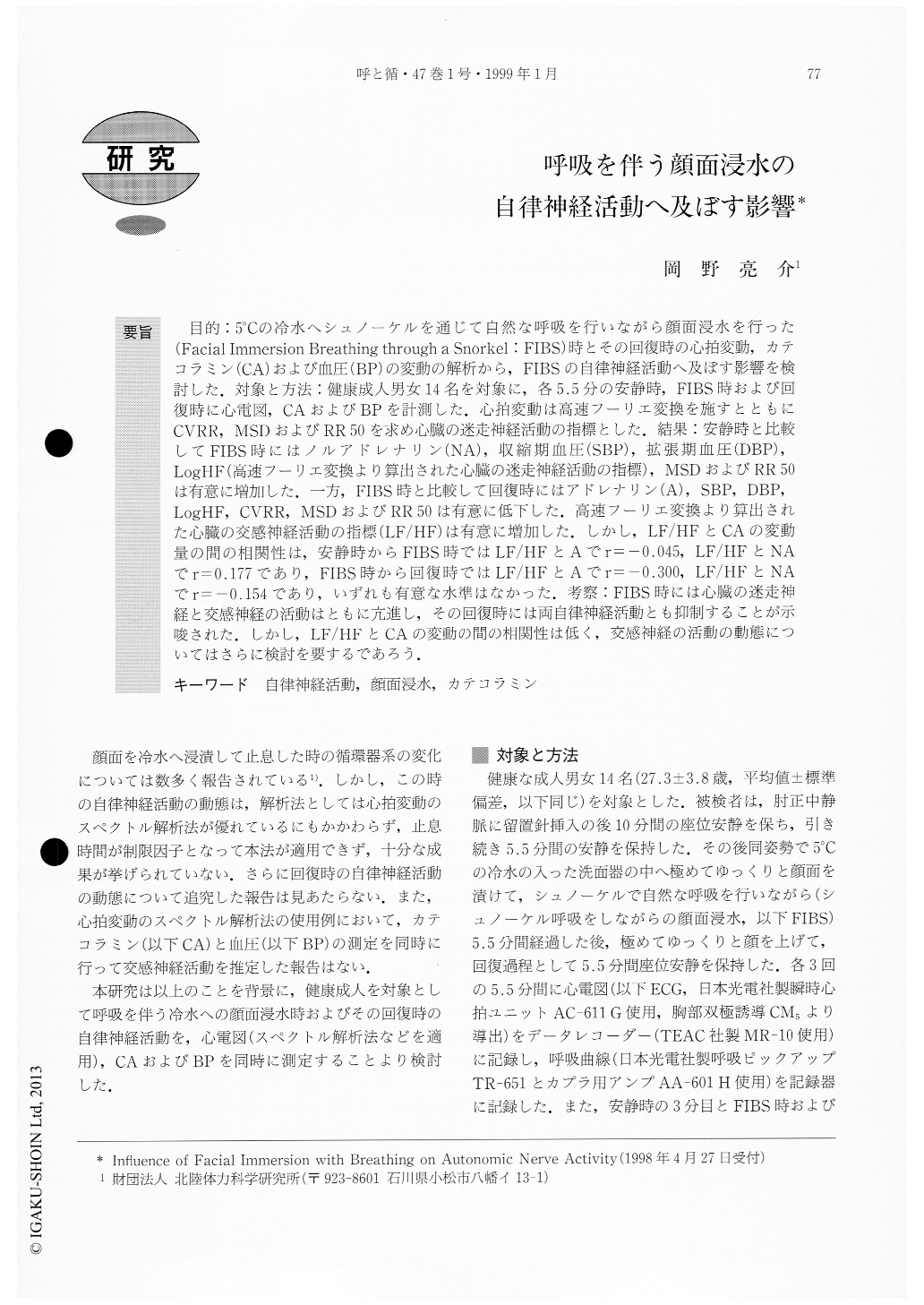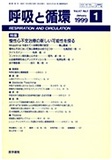Japanese
English
- 有料閲覧
- Abstract 文献概要
- 1ページ目 Look Inside
目的:5℃の冷水ヘシュノーケルを通じて自然な呼吸を行いながら顔面浸水を行った(Facial Immersion Breathing through a Snorkel:FIBS)時とその回復時の心拍変動,カテコラミン(CA)および血圧(BP)の変動の解析から,FIBSの自律神経活動へ及ぼす影響を検討した.対象と方法:健康成人男女14名を対象に,各5.5分の安静時,FIBS時および回復時に心電図,CAおよびBPを計測した.心拍変動は高速フーリエ変換を施すとともにCVRR,MSDおよびRR50を求め心臓の迷走神経活動の指標とした.結果:安静時と比較してFIBS時にはノルアドレナリン(NA),収縮期血圧(SBP),拡張期血圧(DBP),LogHF(高速フーリエ変換より算出された心臓の迷走神経活動の指標),MSDおよびRR50は有意に増加した.一方,FIBS時と比較して回復時にはアドレナリン(A),SBP,DBP,LogHF,CVRR,MSDおよびRR50は有意に低下した.高速フーリエ変換より算出された心臓の交感神経活動の指標(LF/HF)は有意に増加した.しかし,LF/HFとCAの変動量の間の相関性は,安静時からFIBS時ではLF/HFとAでr=−0.045,LF/HFとNAでr=0.177であり,FIBS時から回復時ではLF/HFとAでr=−0.300, LF/HFとNAでr=−0.154であり,いずれも有意な水準はなかった.考察:FIBS時には心臓の迷走神経と交感神経の活動はともに亢進し,その回復時には両自律神経活動とも抑制することが示唆された.しかし,LF/HFとCAの変動の間の相関性は低く,交感神経の活動の動態についてはさらに検討を要するであろう.
This study investigated variations in autonomic nerve activity during and after facial immersion breathing through a snorkel (FIBS) in water at 5℃. Fourteen healthy adults of both genders served as subjects. Elec-trocardiogram, catecholamine (CA). and blood pressure were measured during rest, FIBS, and recovery. After analysis of successive RR intervals using methods in-cluding fast Fourier transformation, CVRR, MSD, RR50, and LogHF were used as indices of cardiac vagus nerve activity, and LF/HF was used as an index of cardiac sympathetic nerve activity. MSD, RR50, LogHF, nor-adrenaline, systolic blood pressure (SBP), and diastolic blood pressure (DBP) increased significantly during FIBS. In contrast, CVRR, MSD, RR50, LogHF, adrenaline, SBP, and DBP decreased but LF/HF in-creased significantly during recovery. From these results, it was suggested that cardiac vagus and sympa-thetic nerve activities were accelerated simultaneously during FIBS, and both activities were depressed during recovery. However, because the correlation between the variations of LF/HF and CA was low, further study is indicated.

Copyright © 1999, Igaku-Shoin Ltd. All rights reserved.


